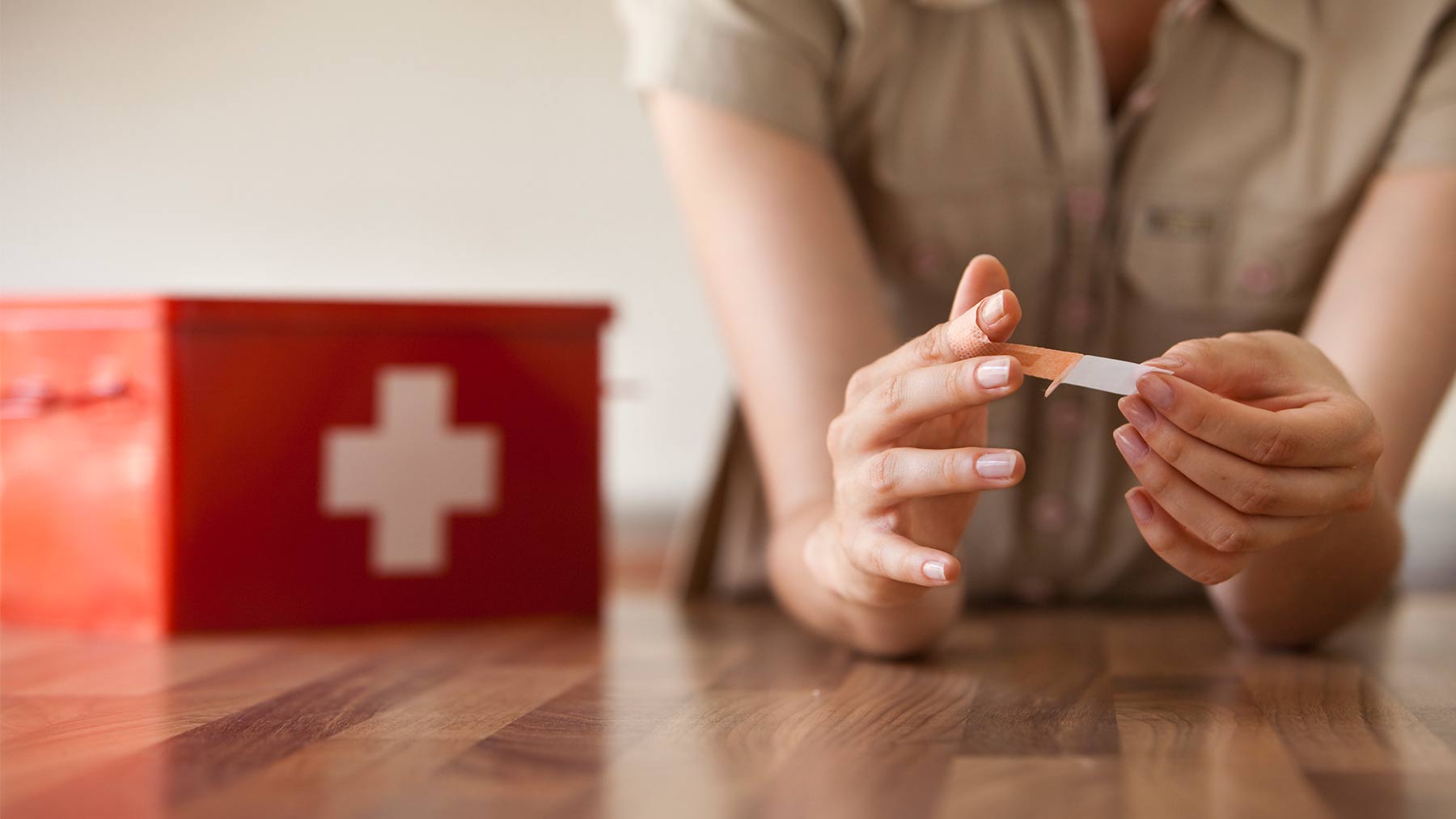How to treat wounds, scrapes and cuts

Most minor cuts can be safely treated at home. It’s important to make sure your wound stays clean and doesn’t get infected.
When your wound first happens, make sure to clean it well with water. If it has dirt or debris in it make sure to rinse it out especially well. Tap water is fine. Rinsing your wound well is the most important thing you can do to present infection. You can use petroleum jelly or antibiotic ointment on the closed wound to help with scarring. After this, put a clean, dry bandage on it. Be sure to change it at least once a day – but especially after you get it wet. It’s fine to bathe normally, but just avoid swimming and long bathtub soaks for anything worse than a scrape. There’s a perception that it’s important to let a wound “air out”, but there is no needs to do this. Wounds actually heal faster when they remain covered!
It’s normal for pain to accompany a wound. You can take acetaminophen (Tylenol) or ibuprofen (Motrin, Advil) as directed on the package. Avoid aspirin products, since they can cause or prolong bleeding. Apply ice if you have bruising or swelling, and avoid picking at scabs. If you’re spending time outdoors in the sun, use sun protection factor (SPF) 30 sunscreen over the area until it’s completely healed.
If there’s one thing that I’d recommend having on hand at all times, its bandages. There’s not much else you need other than that. Antibiotic ointments or petroleum jelly will help prevent scarring, but neither are necessary when it comes to safely treating wounds. It’s not necessary to use hydrogen peroxide, iodine or rubbing alcohol to clean minor wounds, as they’ll likely just irritate the area instead. Remember, rinsing well with lots of plain water is the best way to prevent infection.
Keep your medicine cabinet stocked with these must-haves.
When to seek medical attention
Large, gaping and deeper cuts — or any wounds that won't stop bleeding — need medical treatment. Additionally, if you have anything stuck in your wound, have trouble moving/feeling things around or far away from the cut, have uncontrolled pain or concern for infection, you should go to the emergency department.
If a wound looks deep, won’t stop bleeding or you have fat or muscle showing, you may need stitches.
It’s important to leave a bandage on your stitches for at least 24 hours. After that, you can take the bandage off. Showering normally is fine – just make sure you are careful and gentle around the area of the wound and pat dry when you’re finished. Apply a layer of antibiotic ointment with a clean, dry bandage and repeat the next day. If your doctor gives you special instructions for your wound, make sure to follow those, too.
If you’re helping someone else
If you come across someone who has a wound that’s bleeding, it’s important to apply direct, firm pressure to the wound for at least five minutes and try to get them medical attention as soon as possible. If there’s a concern for heavy or arterial bleeding, get to the emergency room quickly and keep applying firm, direct pressure until the bleeding has stopped
Dr. Marlisa Mann is an emergency medicine physician at The Ohio State University Wexner Medical Center.




